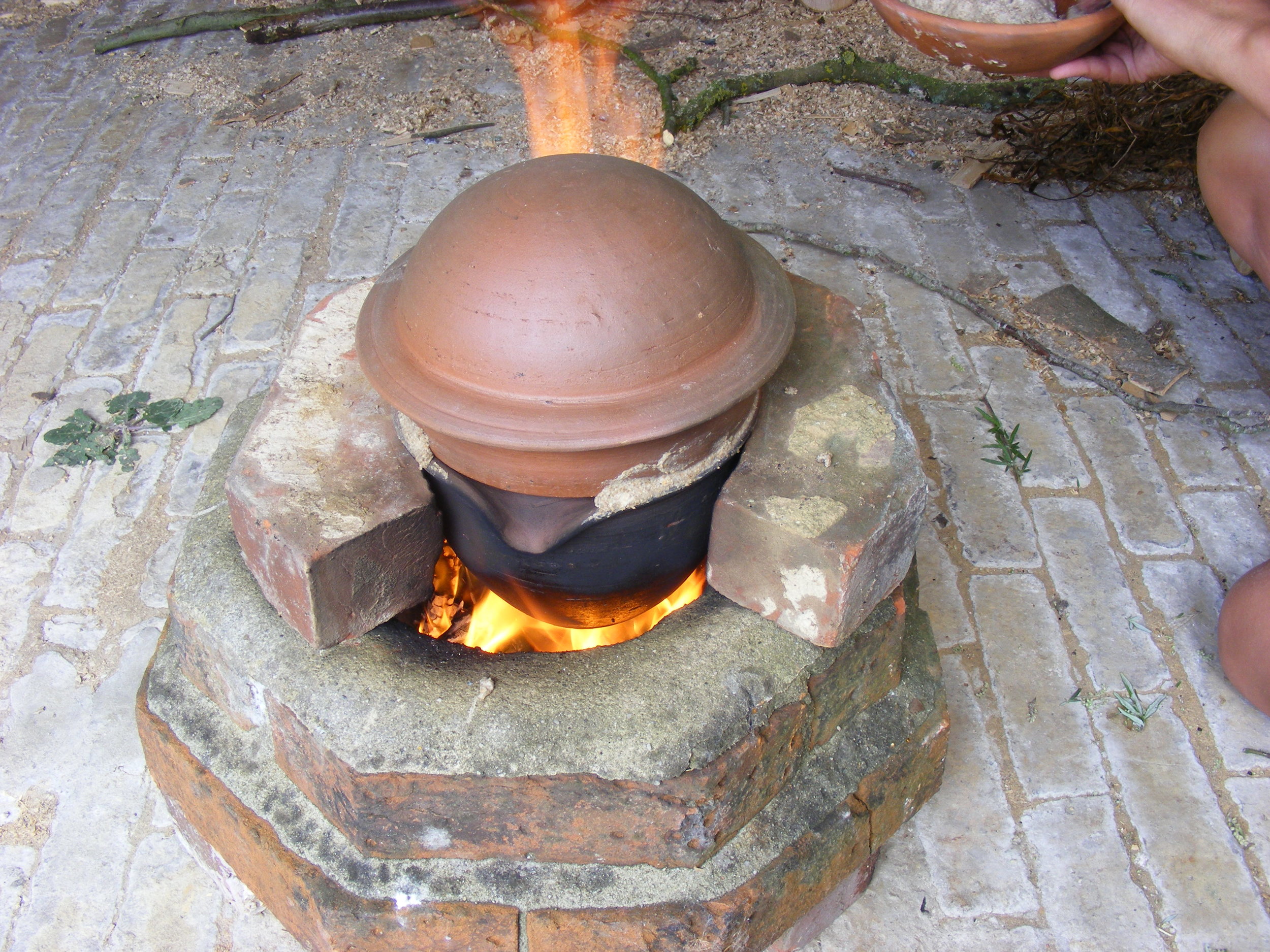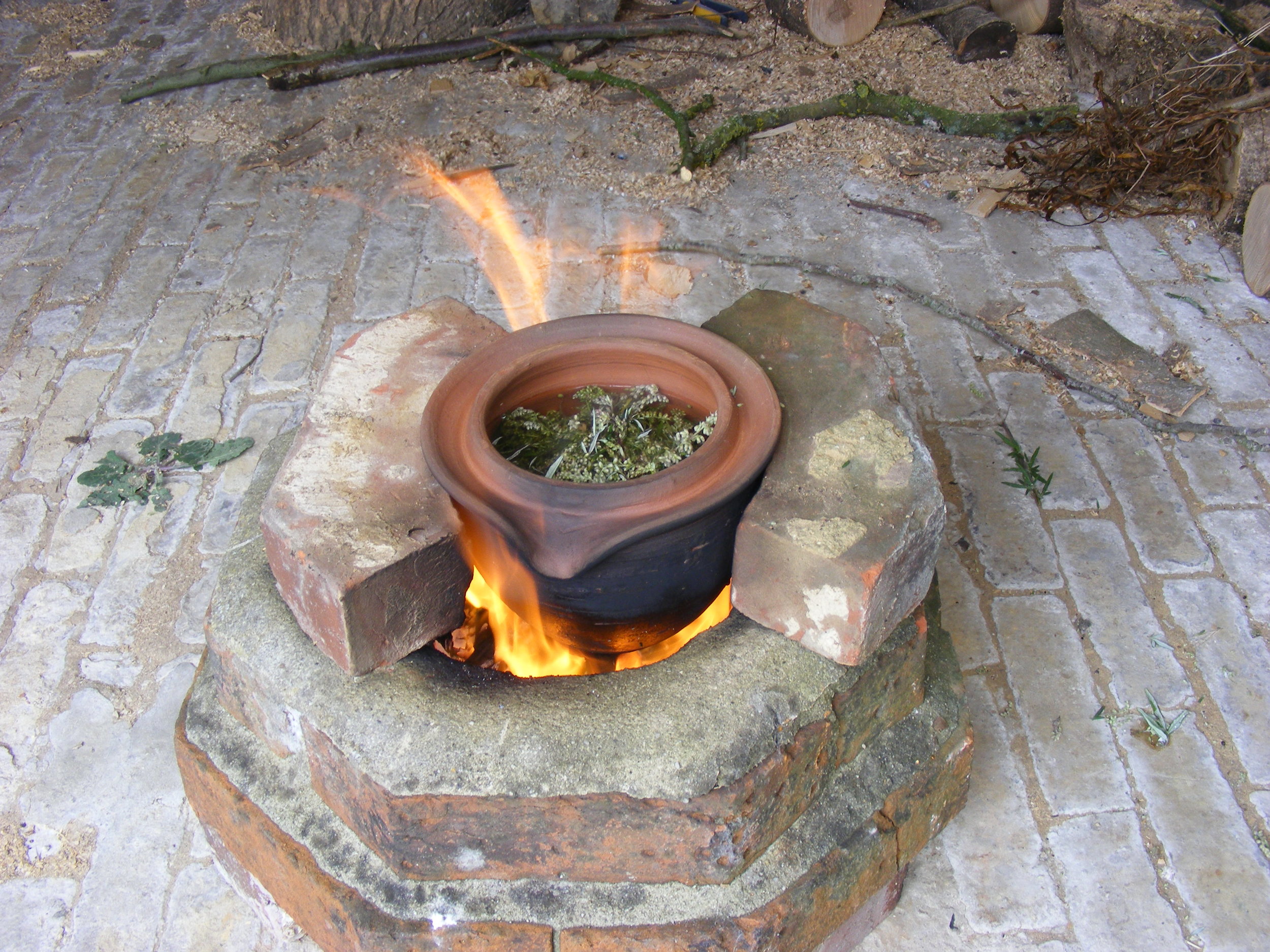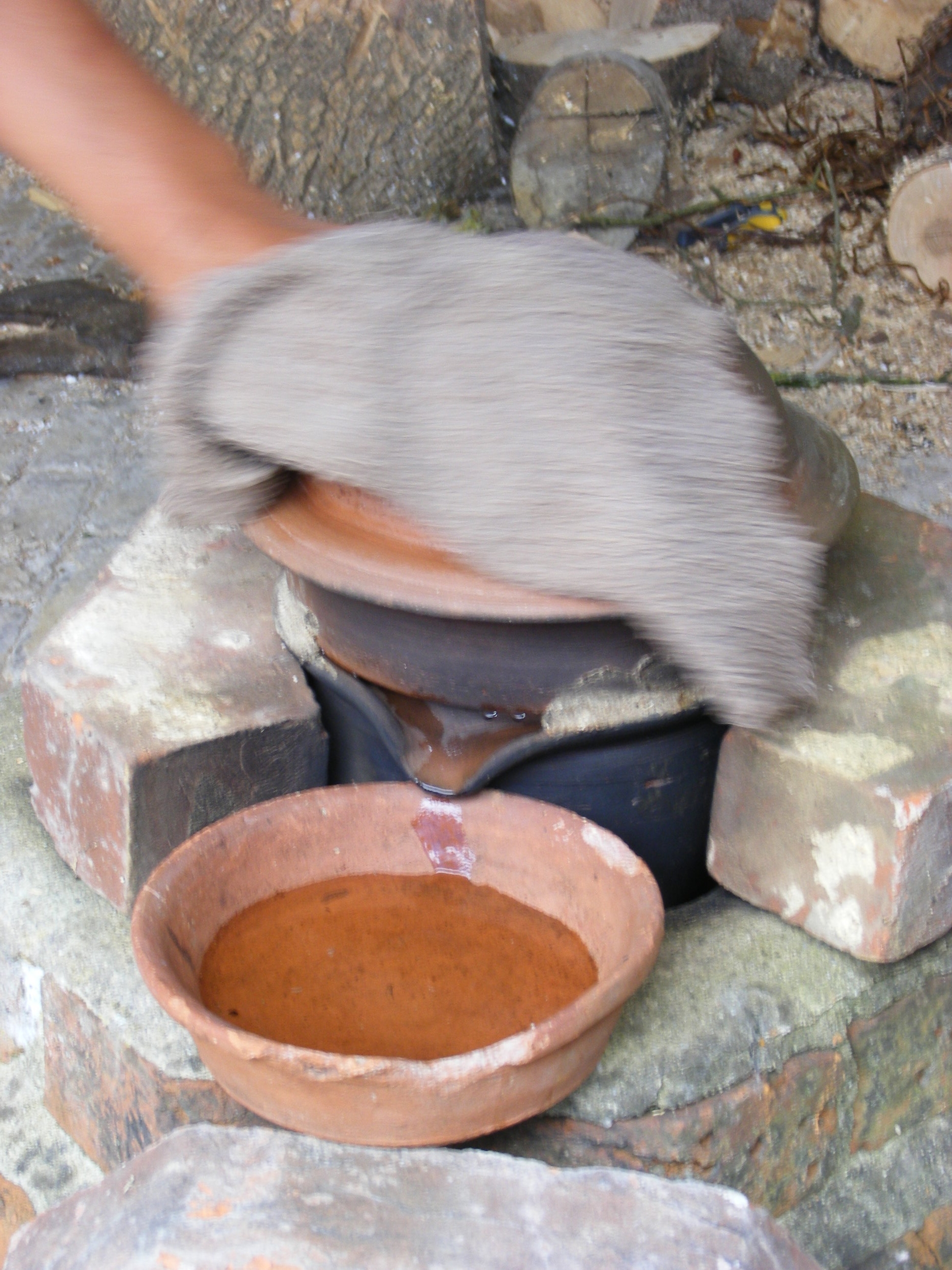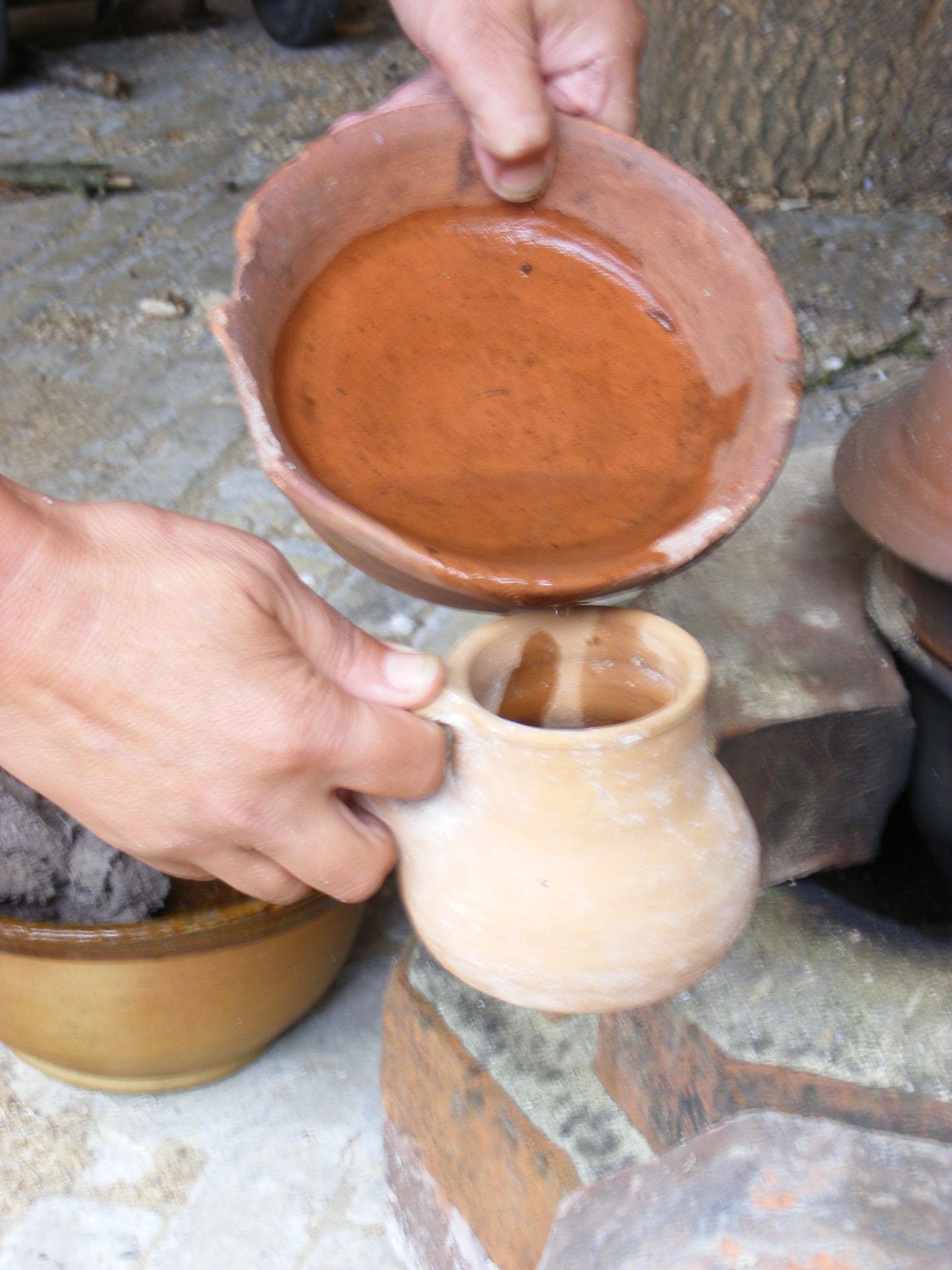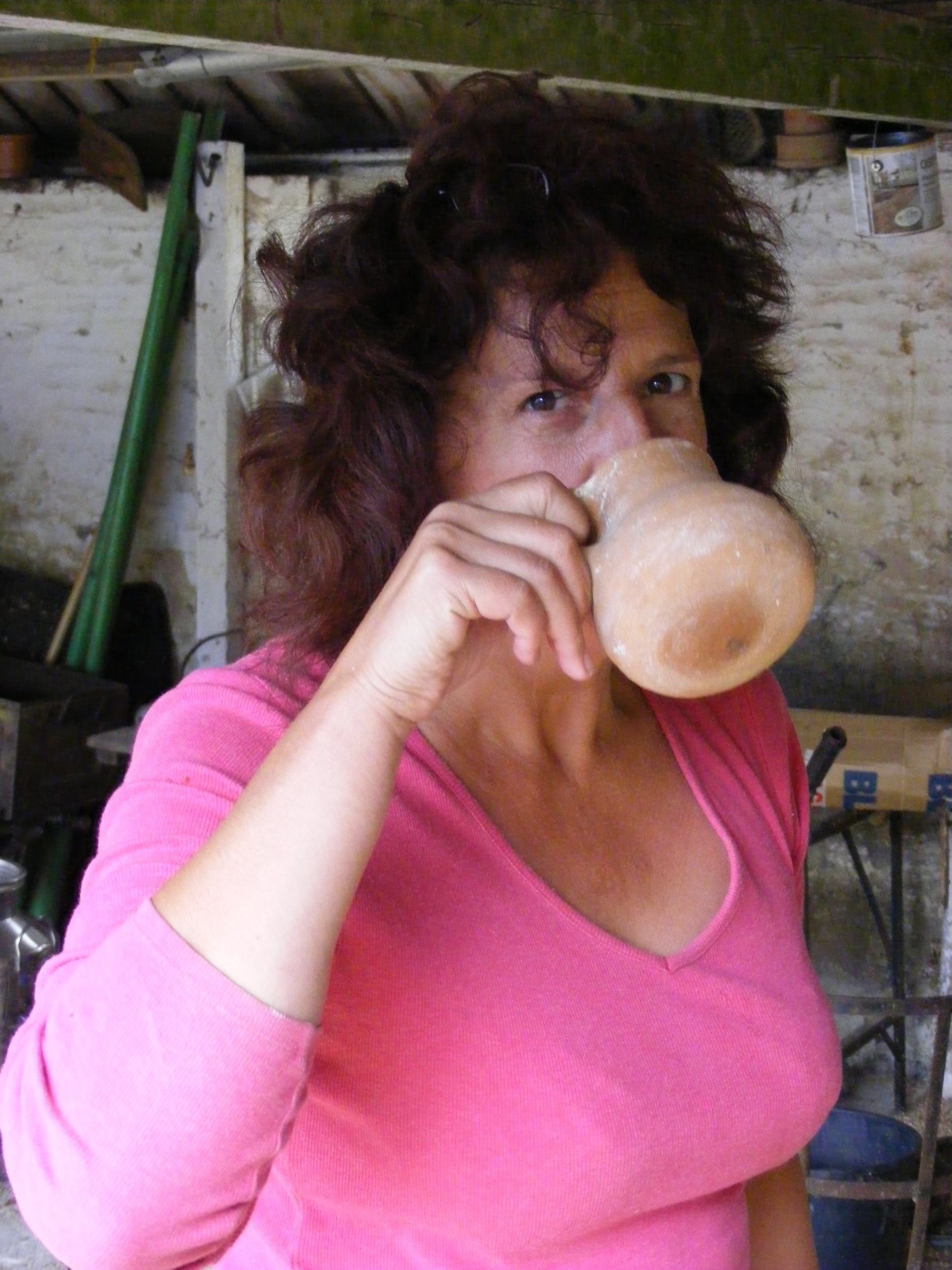It's always great taking our large copper alembic still out and about to show people how we distil herbs to use in our sprays. I love distilling hydrosols as,not only do they contain the essential oils and other chemical constituents of a plant but they also hold the energy of the plant they came from in a liquid form and as a flower essence producer this is very exciting.
Last time we were at Hauser Wirth nr Bruton at one of their fabulous events a gentleman came up and enthusiastically told us about an earthenware bronze age still he'd had a go at replicating. This got me looking more into the history of distilling and how distilling techniques and vessels had changed over the centuries, and how much it had stayed the same.
My mother's partner is a skilled potter and when I showed him the images of the still the gentleman had told us about I could see he was itching to make one similar so a few months later he came up, much to my delight, with the one pictured above.
The key thing with distilling anything is heating a liquid until a steam forms and then condensing this steam back into a liquid, and being able to collect the transformed liquid to get the required final substance- this may be a spirit or an essential oil or, in our case, a hydrosol/floral water. With whatever method you use there are inefficiencies and many variables. Our copper alembic still, of which the design hasn't changed for several hundred years, is pretty much perfect - the steam is taken away from the heated vessel to be condensed with cold water and collected through a tube to produce the liquid you are after (see image below).
With all things 'historical' one has to depend on a mix of previous writings/Google/ones own intuition. 'Hard facts' are sometimes difficult to ascertain but there are drawings and findings of those who have gone before us. Here is the best 'history of distillation' that I have found so far which states the first evidence of distillation at about 3500BC and gives further details of distillation through the ages.
So of course there were practical problems as there are with everything you do for the first time - we filled the container too full with (well) water and herbs - we used mugwort- so as not to taint the vessel too much with essential oil the first time... and as it boiled it overflowed. It was hard to condense the steam with cold water and/or a cold cloth to get a distillate from the lip. A design change I immediately suggested was to turn the 'brim' of the 'hat' up the other way up so water could be more freely added. But apart from that the hydrosol that came out was surprisingly potent -although quite dusty in flavour due to me insisting that we only used unglazed vessels as they would have in the bronze age - the 'mug' in the final photo is actually dated at 1400BC - and there is lots of experimenting to be done but as I stroked the top of the vessel with a wet cloth again and again to 'milk' the sweet drops of liquid from the steam I connected with generation after generation of herbal apprentices before me which,in itself, was enough.
If you would like to come and experience this primative method of distilling for yourself (as well as learning how to use a copper alembic still) to rediscover the healing power of hydrosols do get in touch to put your name on the list for our next workshop.
And if you have any questions about this process do please ask. And if you want to find out about my work with hydrosol essences check out issue 4 of Sentire International Essence Magazine

